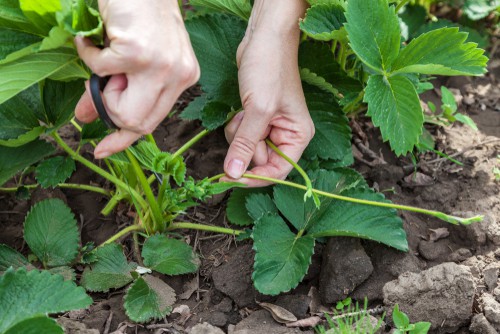Last updated on April 22nd, 2022
Our site is reader supported, this means we may earn a small commission from Amazon and other affiliates when you buy through links on our site.
Strawberries are a wonderful fruit, that given the right conditions will provide ample fruit throughout the season. But what happens when the plants have finished fruiting? All too often gardeners forget about them until the next year, but by that point, the damage might have already been done. It takes only a little effort to keep the strawberries happy and healthy and produce an equally abundant crop the following year.
So, what should you do with your strawberry plants after fruiting? Follow these steps.
Step 1 – Remove the netting you have used to protect the fruit
The plants will need to have ample space around them, so be sure to help their circulation when they aren’t in the growing season by removing any coverings or netting that was in place to prevent birds from eating the fruit.

Step 2 – Remove any mulch from around the plants
If you put any mulch around the perimeter of the plant, now is the time to remove it. You do not want to leave the old, straw mulch under the plants or it will give pests like slugs a good hiding spot.

Step 3 – Prune away any dead or dying stems and leaves
Tidy up the plants by getting rid of dying or dead leaves. This gives your plant room for new leaves to grow and lets the plant cultivate leafy growth for winter. If there are any plants that look like they have died entirely now is the time to remove them. Shear away any unwanted runners that have gone too far as well. You can, of course, save them for propagating later.

Step 4 – Do a little weeding
Remove any weeds that are cropping up in and around the strawberries. These will deprive the plants of vital nutrients unnecessarily.
Check out our review on some of the best weeding tools
Propagating – You can propagate the runners

If you decide to propagate more strawberry plants from the runners you removed, place the runner into a compost filled pot. It is best to put it into a pot before detaching it, in late summer or early autumn, and then snipping it off the main plant once it has rooted.
Top Tip
Remember that no matter how well you care for your strawberries during the peak season (and the off season), they will only produce good crops for the first 3-4 years. That being said, it is very beneficial to propagate runners from the healthiest, most prolific plants every year so that you can replace the oldest plants in sequence each season.


